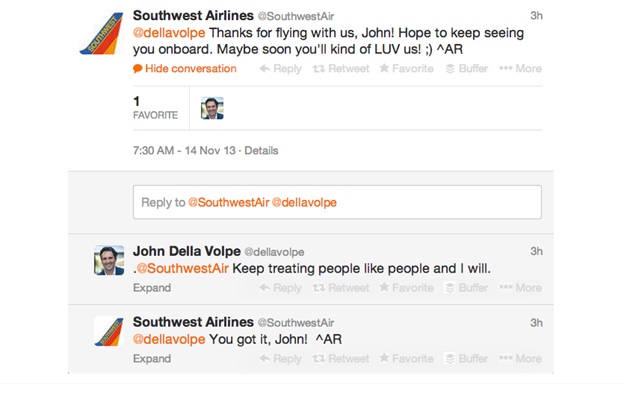Blog
5 Useful Strategies to Upgrade Your Identity as a Brand

Do you think it’s time to upgrade your branding strategy? If you do, then keep reading as I am going to enlighten you about some new branding techniques that work.
Branding is everything
Replace the question “What is a brand” with “What’s not a brand.” Branding is ubiquitous. A brand can be anything and everything. Brand identity cannot be reduced to any particular aspect.
A half eaten apple reminds you of Apple.Inc because the Cupertino-based company has a similar logo. It’s not that we consciously think of Apple, our subconscious mind just signals us. Successful brands have crept into our subconscious and made a permanent place there. As a result, we see them everywhere.
Do not pigeonhole branding into any rigid aspect; doing that amounts to restricting branding. The lesson to learn from the examples above is whatever reminds someone of your brand is a part of branding. Try putting brand’s essence in everything to increase your reach among the customers.
Communication matters
The quality of communication is critical to branding. Communication can kill your brand. At the same time, it can grow your brand and increase your sale.
A cold approach to communication is a strict No. A lukewarm approach won’t do any good either. Today’s coveted customers are mostly Millennials as boomers are transitioning into saving for retirement. And millennials value the experience alongside the product. Poor communication can turn them off.
Mistakes brands make at the time of communicating with audiences include:
Using wrong channels: Select a channel that suits your audience best. Millennials are on social media 24/7. Communicate with them through social channels. Among the social channels, some like Pinterest are skewed to women. Use those channels to connect to female audiences. Older generation still prefers communication over phone. So dial their numbers and be very polite.
Remove clutters: Communication clutters include connection downtime, obscure information, turnaround time delay, etc. Make sure you have a steady Internet connection at office. Lack of proper communication between customers and customer service reps qualify as clutters. Proper communication removes them.
Sell the brand
But don’t sell the product. A brand is bigger than a product. Brands that follow archaic strategies only pitch their products. While one product may be stellar in quality, another product may very well be terrible.
Selling the brand is always a safer bet. It encourages brand loyalty. The top brands have a dedicated consumer-base. Unless they embark on a poor-quality-product-release spree, their consumers will remain loyal to them. Microsoft killed the “start” menu in Windows 8 and went for a Smartphone-esque slate style.
They have gotten a lot of flak for this, mostly from loyal consumers. But despite criticizing, the customers didn’t dump Windows in favor of Linux or OS X. This proves brand loyalty can offset negative product experience, provided it’s an aberration, not the norm.
You cannot command loyalty from customers unless you leverage content marketing. Red Bull has built and sold a culture by doing so. Top brands develop content strategies based on customer survey findings; the survey findings allow them to identify those aspects of branding that customers will love to buy.
C stands for
Call-to-action. It also stands for customer service. By adding them up, you can grow your brand. Let me explain how you can link them together:
The onsite elements that typically lead to call-to-action include
- Services page
- Customer testimonials
- Product image/video
- Flat discount offers
You can personalize these elements, but they can never be as effective as customer service. Customer service is an untapped resource when it comes to sending traffic to CTA. The reps can monitor the quality of engagement and take visitors to pages with call-to-action buttons.
Customer service can have a presence beyond a website, make a foothold on the platforms which are the major sources of traffic, such as social media. The best thing about customer service is it is interactive, unlike the said onsite elements.
Southwest Airlines used Twitter to engage with customers. See the screenshot below:

On social media or over phone, a customer service rep can initiate a conversation with a customer or a prospect and encourage them to visit the Call to Action page. That said, the lead must be a warm one. If it’s a customer, he must be a satisfied customer. Leading an unhappy customer to a Call to Action page is awkward and off-putting.
Emotional connection
Connecting with people on an emotional level has its perks. Far-sighted brands push consumer emotion to the extent that customers fail to separate brands from living and breathing individuals.
There are several driving factors behind brand personification. But none can be as strong as an emotion-driven connection. Nielsen’s Global Loyalty Sentiment Report points out the attributes that cause a shift in customer loyalty. See the infographic below:

Brands that succeed in establishing emotional ties with audiences are perceived differently. Customers and noncustomers alike perceive them in terms of humane attributes. Below is the visual depiction of human emotions associated with brands across the world:

Brands that embody the qualities depicted in the infographic don’t have to overdo anything. Customers feel a subconscious inclination to buy from them. Content marketing, especially visual content is instrumental in helping brands incorporating the qualities and creating and nurturing a warm connection with their audiences.
Summing up
The five strategies discussed here can help you mark a new era in branding. Don’t follow these strategies blindly, rather have an experimental approach while following them so that something new comes from them - something that’s hard for us to anticipate and will be a surprise..
Image Courtesy: pixabay.com

Adam Frankel
Adam Frankel is President and CEO of Frankel Interactive, a leading South Florida digital agency specializing in custom websites development, ecommerce development and digital marketing. For over 15 years he's been working with businesses and government agencies to bring their organizations online in order to build brand awareness, communicate with stakeholders, generate leads and drive sales. His belief is that all businesses need to keep up with technological trends including the continual transition from desktop to mobile, search engine algorithms changes, and social media engagement. His goal is to help them implement strategies to successfully compete in an ever crowding digital marketplace. When he isn't touting the benefits of web-based marketing, he enjoys fishing and spending time on the waters surrounding Miami with family and friends.
